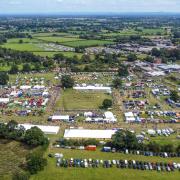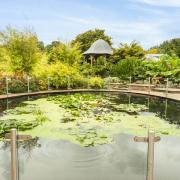James Balme travels back in time on a visit to Culcheth.
The village of Culcheth stands just six miles to the north-east of Warrington. Today, it is mainly residential, with a lovely open common where community events take place. However, Culcheth also has a rich history stretching back as far as Saxon times and beyond. Between 1889 and 1974 the Culcheth was administered by Lancashire County Council until boundary changes placed the village inside the County of Cheshire.
On ancient maps covering South Lancashire the village was marked as Calchuth or Celchyth among other variations of spelling. By 1201 the name was recorded as being Kulchit. The area surrounding the village is believed to have been established before the time of the Norman Conquest but the discovery of Bronze Age pottery close to the village suggest the area may have been inhabited some 4,000 years ago, when much of the area wood have been laid down to woodland.
Around 1200, Gilbert de Culcheth, lord of the manor of Culcheth, built a hall. Gilbert was survived by his son Hugh de Gilbert and four daughters: Margery, Elizabeth, Ellen and Joan, who became wards of the Lord of Warrington. By 1212 Hugh held the manor, by knight’s service of William le Boteler. Hugh de Gilbert was to meet an untimely death when in 1246, it is believed he was murdered by a gang of 12, resulting in no male heir to inherit the Culcheth estate. The de Culcheth name lived on only by convenience of marriage –the husband of the eldest surviving daughter taking the name of de Culcheth to ensure its survival. The Culcheth dynasty came to an end, however, when Thomas Culcheth, the last of the male line died in 1747. Having no heir to inherit the estate, the manor was passed to his cousin Thomas Stanley of Eccleston in the Fylde.
Another piece of village history relates to Colonel Thomas Blood, born in Ireland in 1618 to a wealthy family of English descent. He became an Anglo-Irish officer and is best known for his attempt to steal the crown jewels of England from the Tower of London in 1671, and the attempted kidnapping of James Butler, 1st Duke of Ormond. The colonel was to marry Mary Holcroft at nearby Winwick church and resided for a short time at Holcroft Hall in Culcheth. At the outset of the Civil War of 1642 he fought for the Royalists, changing sides when he realised the Parliamentarians were more likely to win.
In 1528, a church was built in the village, becoming a chapel of ease to nearby St. Oswald's in Winwick. In 1743 it was decided to construct a replacement church, to be known as Newchurch. One hundred and sixty years later, in 1903, disaster struck when Newchurch was badly damaged by a fire thought to have been caused by an electrical fault. Only the tower, the six bells and the parish registers survived. The church that stands today was opened on July 23,1904, with the foundation stone laid on October 13, 1903, by the Earl of Lathom of West Lancashire, still visible.
My film, Newchurch Beyond the Flames, telling the story of the church, can be viewed for free with many other local history films by visiting my channel, youtube.com/@Tvpresenter4history.



























